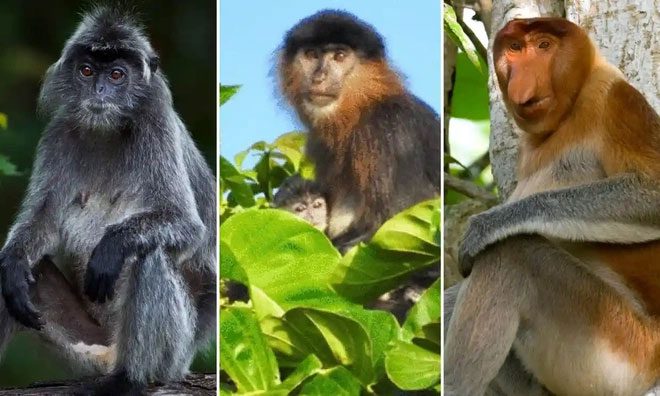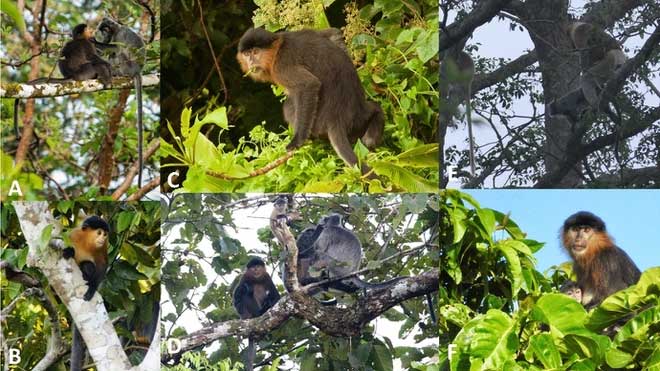According to researchers, a hybrid monkey found in a forest in Malaysia may be the result of interspecies mating, triggered by habitat loss.
An unusual monkey was observed in the forest along the Kinabatangan River in Sabah, Malaysia. Images of the monkey shared on wildlife groups on social media garnered attention due to its distinctive appearance, as reported by the Guardian on June 12.
Scientists studied various photos of the monkey, examining its coloration and body details, and concluded that it is likely a hybrid of a male Proboscis monkey (Nasalis larvatus) and a female Silvered leaf monkey (Trachypithecus cristatus).
They noted that the face of the mysterious monkey resembles that of the Proboscis monkey more than the Silvered leaf monkey, although its nose is not as long and its skin is gray. The distribution of its fur color exhibits characteristics typical of the Proboscis monkey.

(From left to right) A female Silvered leaf monkey (Trachypithecus cristatus), the mysterious hybrid monkey holding a baby, and a male Proboscis monkey (Nasalis larvatus). (Photo: Nature Picture Library/Alamy).
The fur of the unusual monkey is long and dense, resembling that of a Silvered leaf monkey, but the sides of its face lack the mane commonly seen in this species.
The presumed hybrid monkey was first seen in 2017 and has since matured. It was last photographed in September 2020 while holding a baby monkey.
Observers reported seeing multiple groups of the two species living close to each other in the area, and they have also captured images of other interspecies mating events.

Images A, B, C, D, F show the mysterious monkey from infancy to adulthood. The Silvered leaf monkey in image A may be its mother. Image E shows an adult male Proboscis monkey mating with an adult female Silvered leaf monkey. (Photo: International Journal of Primatology).
The research team stated that this case may be linked to habitat loss, forcing species to live in close quarters in the forest patches along the Kinabatangan River.
“Loss or fragmentation of habitat is always a threat to wildlife populations,” said Nadine Ruppert, a primatologist and senior lecturer at Universiti Sains Malaysia. Ruppert is a co-author of the study on the mysterious monkey, published in the International Journal of Primatology in April.
Previous research has shown that forest cover in the area has significantly decreased in recent decades. Sabah lost 39.5% of its forest area from 1973 to 2010.





















































